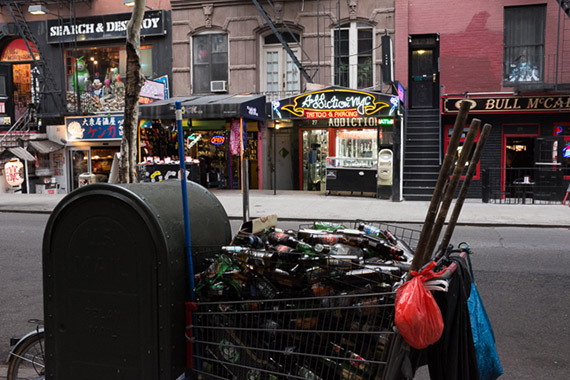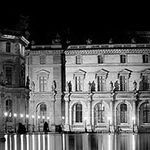At some point in the life of a photographer, they start to think past the single image. They start to think of their work in terms of themes and ideas. They start to classify their images into groups. This is not the case for all photographers, but for some of them. Others only think in terms of individual images and there is nothing wrong with that.

St. Marks, East Village, NY
However, if you have ever thought about creating a street photography project, here are some thoughts and ideas about how to do it. Street photography is an art form that works very well when images are grouped. Street photography fits into book format so well when each image plays off the others to create a larger narrative. Images that might not work on their own can have new life in a narrative. It’s a very worthwhile experience to start thinking about your work this way and it can help to improve your photography in general.

Reveler, Lower East Side, NY
Use Your Work to Inform the Idea of the Project
Starting day one with a street photography project might not be the best way to go about it, but crazier things have happened. There is a reason why many photographers shoot for years before they begin to develop and see in terms of the larger picture of their images.
Go through your archive and group your images together and think about your favorite shots and the overall themes and ideas within them. This is a great way to find an idea because it will fit innately with what you are already shooting. There’s a reason that you are already capturing this type of image.

Passed out, Lower East Side, NY
Study the Work of Other Photographers
Take a look at books from photographers such as Robert Frank, Bruce Davidson, Lee Friedlander, Alex Webb, Joel Meyerowitz, Bruce Gilden, Martin Parr, Stephen Shore, Alex Webb, or Daido Moriyama. Study these to get an idea of how narratives come together. Use them as inspiration, but then figure out what you have to offer that is unique. What makes your photography different?

Brunch Scene, East Village, NY
Create a Project Around Where You Live
I think this is a great area to start. Pick the neighborhood that you know best and create a project around that. Figure out how to give a sense of the place, to tell a story, to make it beautiful, and to make it interesting. Think in terms of a narrative.
When you know something well, that knowledge will transfer to your photographs to make them deeper. The images will have more meaning and will be more complex. If you live in the middle of an an area that you think is boring or unphotogenic, take a look at the work of Lee Friedlander or Stephen Shore. They photographed in many areas that not many people thought of as photogenic, and the images are full of meaning, beauty, and interest.
You can even photograph your family and friends candidly as part of this. It does not only have to be strangers as part of your projects.

Champagne, East Village, NY
Take your time
You can and should spend a few years with your project. Pick your locations, get the light right, mix planned shots with spontaneous shots. The ideas behind your project will develop as you continue to shoot and notice new things. Your ideas will inform your photographs and your photographs will inform your ideas. Let them grow together.

Punks, East Village, NY
Shoot Broadly and Edit Ruthlessly
Have a large edit where you group together any images that might work for your project. But when it comes down to it, edit ruthlessly. You may have to cut 150 images down to 50, and with that so many of your favorites might not make the cut. Some images that are great on their own might not fit the narrative.
Shoot these edits to friends and colleagues and do it over and over on many different occasions.
Give Viewers Credit and Embrace Subtlety
The Internet tends to change the way we see imagery, because we see thousands of images each day through it. Colorful and obvious images pop out in the stream and force us to click the articles, and this can change how we view imagery.
When you are creating a project, you are creating something that already has the attention of whoever is viewing it. Give them credit that they will have the ability to understand your imagery. Every image does not have to be an obvious wow or have that pop factor. Some of the most subtle images can be the most powerful. Maybe they will pass by the first time but then it will start to grow with them. Create images that make people wonder why you took them and this will get them thinking.

Saturday around 2am. Lower East Side, NY
Don’t Be Afraid to Change Your Idea
You might have many ideas of what you are shooting at first, but in the end it is the imagery that informs the project. Be open to this and think about pivoting your project as new ideas come about. The more you shoot, the more information you will have about what it is you are shooting and what works and doesn’t work. The key here is to spend time consistently shooting it and experimenting and having fun with it. If you treat your project like this, then it will become a very rewarding experience.
About the Author:
James Maher is the author of Essentials of Street Photography, which covers everything about the genre even down to specific post processing techniques that can bring the best out of street scenes.
Like This Article?
Don't Miss The Next One!
Join over 100,000 photographers of all experience levels who receive our free photography tips and articles to stay current:






Leave a Reply